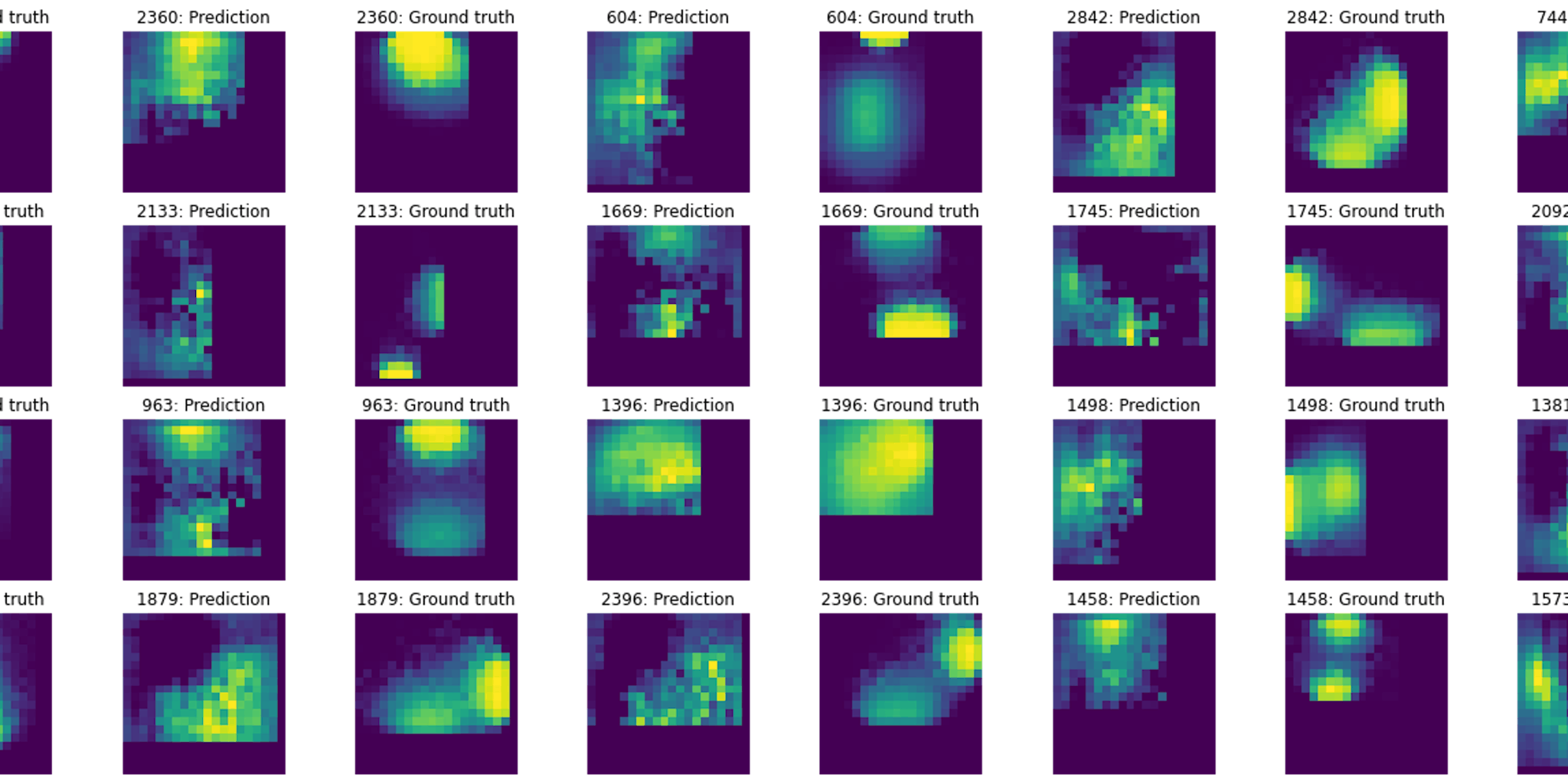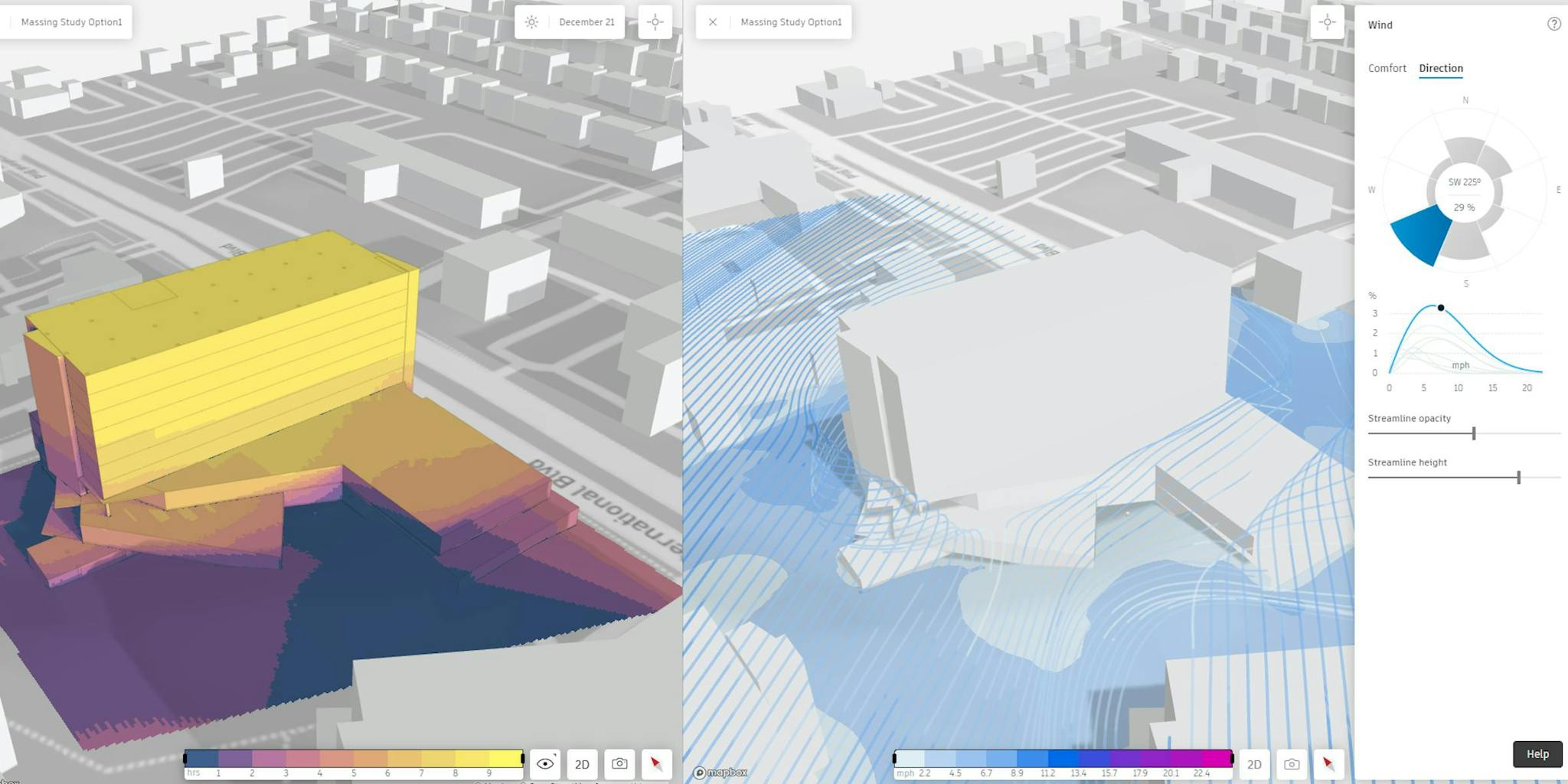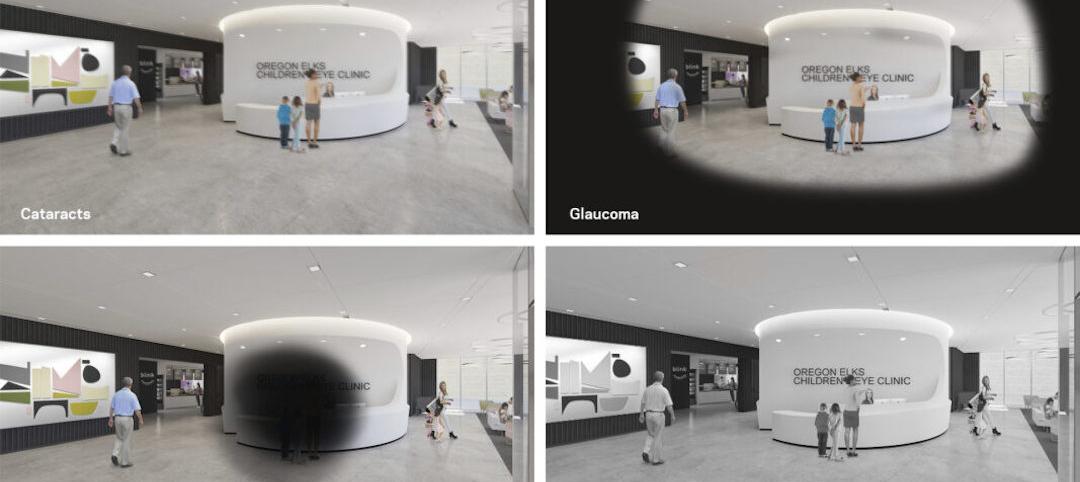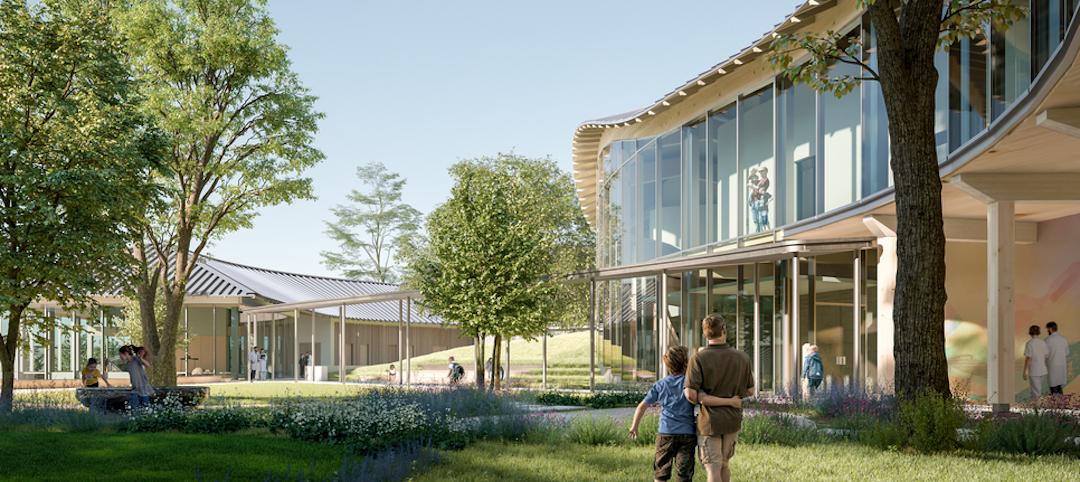We’ve all seen them: swoopy, plant-filled architectural renderings that blur the line between imagination and reality. Architects and clients alike marvel at AI’s ability to produce these photorealistic images, allowing a preliminary design idea to come to life in seconds.
While these futuristic visuals make for stunning eye candy and can help communicate design intent, the true potential of artificial intelligence in architecture extends far deeper. AI-powered tools and workflows fundamentally transform how we design and deliver buildings, focused on cost and schedule efficiencies, risk mitigation and improved sustainability performance.
As a firm with a history of welcoming vanguard methodologies, we believe that—when used in accordance with our critical thinking—generative AI provides tremendous value for our clients and our industry. By leveraging artificial intelligence as a powerful co-pilot, we can mobilize our designers to focus on the higher-level visionary and problem-solving aspects of our craft. In other words, identifying repeatable, outcome-based processes that can be streamlined with AI so we can do what we do best: design.
Here, in the first part of our ongoing series on AI in architecture, we focus on four areas we're implementing currently in our practice to generate value for our clients. Read on to learn more (or have your AI “assistant” summarize for you!).

1. Enriching Design Research
While AI may never replicate human creativity, it can powerfully aid design research and ideation. Before putting pen to paper, architects must synthesize vast amounts of data into a coherent narrative and concept. Often, this time- and labor-intensive process can slow the design process and take architects away from the creative work of design ideation.
Instead, AI can act as a digital "assistant," instantly analyzing reams of information, from details about a site, to environmental data, to cultural context and even similar projects. The AI-augmented research capability cross-references knowledge bases to surface relevant insights aligned with a project's goals, uncovering unexpected connections and allowing architects to deeply explore the fundamental ideas driving their designs from the outset.
We’re currently leveraging AI to enrich our design research by using large language models to summarize academic research papers and subsequently act as a conceptual brainstorming tool. These models can quickly digest and distill extensive literature, replacing manual skimming and note-taking, then be used for methodical narrative development that helps us explore storylines, themes and symbolic references. In the future, we anticipate these capabilities to be even more powerful, doing the heavy lifting of aggregating and surfacing knowledge and allowing architects to focus on high-level design conceptualization.
2. Financial Risk Mitigation and Quality Control
Schedule and budget are significant drivers of a project’s financial success. Yet managing budgets and timelines, adhering to code requirements, and ensuring quality control are constant considerations that often slow the pace of design and delivery. Fortunately, AI opens new avenues for proactively identifying and mitigating potential issues, enabling projects to progress more smoothly.
At NBBJ, we are using machine learning models trained on past project data to predict project timelines and skirt compounding issues related to budgets, schedules and available resources. Many of our investigations also focus on how AI can analyze designs for compliance with building codes, zoning laws, internal standards and other best practices. These AI assistants can quickly flag any violations or inconsistencies earlier in the process when solutions are more straightforward. It's important to note, however, that while AI can automate these tasks, as designers we are ultimately responsible for their accuracy.
An eventual goal might look like an integrated AI overseer that combines all these risk identification capabilities, or a system automating code compliance, document consistency and cost tracking that could help teams mitigate issues and avoid surprises. Leveraged responsibly under human direction, these quality control and risk mitigation AI assistants will help produce higher-quality architectural outputs with fewer delays.
3. Streamlining Project Delivery
Another hindrance when it comes to remaining on time and on budget is the labor-intensive documentation process that often creates bottlenecks in the realization of a project. Information must be manually exported, reformatted, and compiled into various report types; a fragmented workflow that can be prone to error.
Therefore, one of the most transformative applications of AI in architecture is how it can streamline project delivery. This goes beyond automating drawing sets to an intelligent system that generates formatted documentation packages customized for whichever stakeholders need them—contractors, fabricators, jurisdictions or clients. In the future, AI could facilitate a dynamic, integrated handoff tailored to each party's specifications. With human oversight, AI will flexibly generate construction documents, fabrication models and permit packages in the final formats needed.
We call this “AI on the shoulder:” embracing AI to automate and simplify tasks so designers can focus on higher-level design responsibilities. While still an emerging capability, our firm is actively exploring AI functions that enable intelligent project delivery, and we’re engaging industry partners to discuss the implications for fundamentally transforming our projects in the years ahead. By getting in front of this evolving AI application, we aim to pioneer new streamlined workflows and set the creative boundaries for how the technology will be leveraged.

4. Real-Time Performance
Sustainability and building performance are two of the most important metrics driving the design process today. As we maximize sustainability in our projects and our practice, we are optimistic about the opportunities AI offers in this area.
To harness these opportunities, we are experimenting with the power of predictive modeling using artificial intelligence. Predictive modeling leverages machine learning to efficiently explore a design space using a “surrogate model,” which can be trained on a set of designs and their simulated data to understand the relationship between different variables and performance outcomes—for example, energy performance. These surrogate models then stand in for computationally intensive simulations to rapidly predict the performance of new design iterations and find ideal solutions.
Several companies are developing AI-powered predictive modeling tools for architectural design. For example, the Autodesk Forma platform applies this approach to sustainable design analysis. As part of our ongoing exploration of AI technologies, we're investigating the capabilities of Forma and similar tools to enhance our performance optimization workflow.
The ability to forecast building performance in real-time during the design process is a game-changer. With AI-driven predictive insights, we can make outcome-based decisions at the speed of thought, ensuring our designs are optimally aligned with sustainability targets from the earliest stages.
While it’s fun to focus on the visual-driven potential for AI, we are most excited about its benefit to productivity, project delivery and cost mitigation. We’re committed to advancing our understanding, use and customization of AI tools to continue to deliver highly relevant and impactful benefits to our clients.
We are excited about what AI means for our market sectors—and discovering the implications of machine learning to improve design outcomes? Today, we are asking ourselves if a workplace simulation can explore the various desk configurations in an office to find the most productive, delightful and efficient layout? What about healthcare design? Can a team of avatars test the design of surgical suite planning options to determine the most effective strategy to reduce clinician errors? The future of design with AI offers us all a pathway to heightened relevancy and value—join us as we delve into these topics and more.
More from Author
NBBJ | Jun 13, 2024
4 ways to transform old buildings into modern assets
As cities grow, their office inventories remain largely stagnant. Yet despite changes to the market—including the impact of hybrid work—opportunities still exist. Enter: “Midlife Metamorphosis.”
NBBJ | May 10, 2024
Nature as the city: Why it’s time for a new framework to guide development
NBBJ leaders Jonathan Ward and Margaret Montgomery explore five inspirational ideas they are actively integrating into projects to ensure more healthy, natural cities.
NBBJ | Oct 18, 2023
6 ways to integrate nature into the workplace
Integrating nature into the workplace is critical to the well-being of employees, teams and organizations. Yet despite its many benefits, incorporating nature in the built environment remains a challenge.
NBBJ | May 8, 2023
3 ways computational tools empower better decision-making
NBBJ explores three opportunities for the use of computational tools in urban planning projects.
NBBJ | Jan 17, 2023
Why the auto industry is key to designing healthier, more comfortable buildings
Peter Alspach of NBBJ shares how workplaces can benefit from a few automotive industry techniques.
NBBJ | Aug 4, 2022
To reduce disease and fight climate change, design buildings that breathe
Healthy air quality in buildings improves cognitive function and combats the spread of disease, but its implications for carbon reduction are perhaps the most important benefit.
NBBJ | Feb 11, 2022
How computer simulations of vision loss create more empathetic buildings for the visually impaired
Here is a look at four challenges identified from our research and how the design responds accordingly.
NBBJ | Jan 7, 2022
Supporting hope and healing
Five research-driven design strategies for pediatric behavioral health environments.
NBBJ | Nov 23, 2021
Why vertical hospitals might be the next frontier in healthcare design
In this article, we’ll explore the opportunities and challenges of high-rise hospital design, as well as the main ideas and themes we considered when designing the new medical facility for the heart of London.
NBBJ | Aug 18, 2021
20 years after developing the first open core hospital design here is what the firm has learned
Hospitals have traditionally used a “racetrack” layout, which accommodates patient rooms around the exterior and situates work areas and offstage functions in a central block.
















